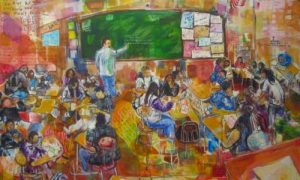The most popular searches in 2010 on Cambridge Dictionaries Online (CDO) show that idioms and slang held the key to learning English as a second language. The CDO search results from 2010 show that some of the top terms language learners searched for weren’t just words, but idioms and slang – showing how they can be one of the hardest aspects of the English language to learn and teach.

The top single word searched for in 2010 was ‘dictionary’, closely followed by ‘bigot’, which showed a huge spike in April 2010 after Gordon Brown made his infamous gaffe on the UK election campaign trail, and ‘inception’, which spiked after the movie of the same name came out in July 2010.
18.4 million visitors made 56.5 million visits to CDO in 2010, making it the most visited learner’s dictionary site in the world. To build on its success, CDO has just launched its biggest ever changes to enhance the learning experience for its visitors.
The search function and its results have been improved, and a blog called About Words, which looks at how the English language behaves, is being developed. The team behind the blog are writers Kate Woodford and Elizabeth Walter, co-authors of the award-winning Collocations Extra, and Hugh Rawson, whose books include Rawson’s Dictionary of Euphemisms & Other Doubletalk; Wicked Words. New Words, a listing of words and meanings that have just started to be used in English, has also been launched. Users of the site can join in the discussion by leaving comments or voting.
Learn more about this topic by reading this article on Phys.
After reading “Decrease anxiety about learning English with mobile gaming” you can check important issues for ESL teachers on the section PDFs, and visit my YouTube channel.








